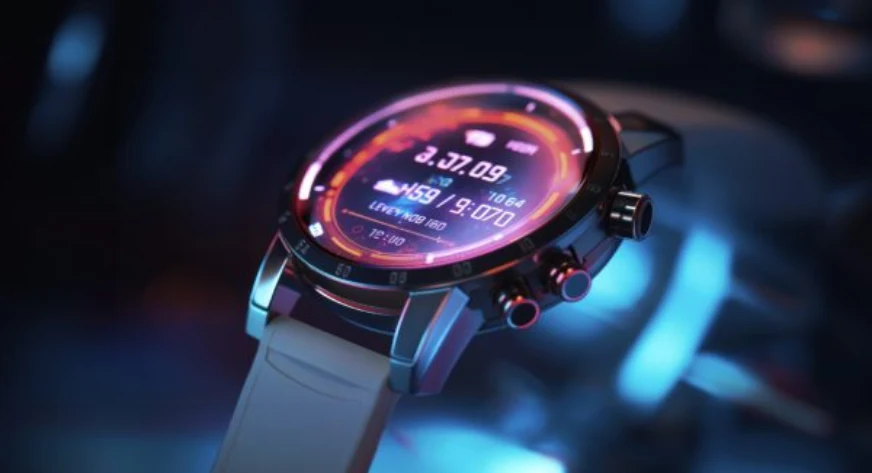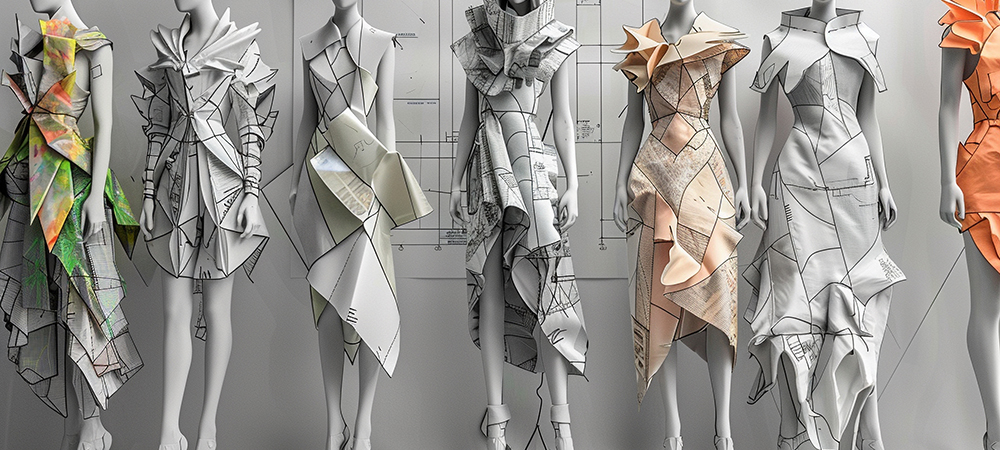The world of wearable technology is undergoing a profound transformation, moving far beyond the simple step counters and notification mirrors of its early days. Once novelties relegated to the wrists of tech enthusiasts, wearables are now emerging as sophisticated, AI-powered companions that seamlessly blend high fashion with high function. This evolution is not merely about incremental hardware updates; it’s a fundamental shift driven by advancements in artificial intelligence, sensor technology, and on-device processing. The latest wave of devices—from smartwatches to intelligent rings—are no longer just passive data collectors. They are becoming proactive coaches, health guardians, and integrated control centers for our digital lives, all while being objects of genuine aesthetic appeal. This convergence marks a new era for AI in Fashion / Wearable Tech News, where the technology you wear is as intelligent and personalized as it is stylish.
From Counting Steps to Understanding Intent: The AI-Powered Evolution
The journey of wearable technology is a story of increasing intelligence and context. What began as a niche for fitness tracking has blossomed into a mainstream category of deeply personal devices, with AI serving as the critical catalyst for this change. Understanding this evolution is key to appreciating where the industry is headed.
The Early Days: Data Without Context
First-generation wearables were excellent at one thing: quantification. They could diligently log steps, track distance, and estimate calories burned. This data was novel and motivating, but it lacked context. The devices knew what you were doing (e.g., walking 10,000 steps) but had no understanding of how, why, or what it meant for your overall well-being. The user was left to interpret raw numbers, a process that often led to waning engagement once the novelty wore off. The focus was purely on hardware and data collection, a far cry from the intelligent ecosystem we see emerging today.
The AI Inflection Point: Contextual Intelligence
The true revolution began when artificial intelligence was integrated at the core of wearable software. AI algorithms can now analyze raw sensor data and translate it into meaningful, actionable insights. Your heart rate isn’t just a number; combined with motion and sleep data, it becomes a component of a “stress score” or a “readiness” metric. This is the central theme in modern Health & BioAI Gadgets News. AI provides the context that was missing, answering questions like:
- “Based on my sleep quality and recent activity, should I push hard in my workout today or focus on recovery?”
- “Is my elevated heart rate due to a strenuous workout or a sign of impending illness?”
- “How did that late-night meal affect the restorative phases of my sleep?”
This shift from data logging to data interpretation is what makes modern wearables indispensable companions. They learn an individual’s baseline and patterns, enabling hyper-personalized recommendations that are genuinely useful, a key topic in AI Fitness Devices News and AI Sleep / Wellness Gadgets News.
Blurring the Lines Between Tech and Couture
As the intelligence inside wearables has grown, so has the emphasis on their external design. Manufacturers now recognize that for a device to be worn 24/7, it must be comfortable, durable, and, most importantly, fashionable. AI isn’t just powering the software; its ability to enable miniaturization and efficiency allows for more diverse and elegant form factors. We are seeing a move beyond the utilitarian smartwatch to sleeker, more discreet options like smart rings and intelligent jewelry. These devices blend into a user’s personal style, making technology feel less like a gadget and more like a natural extension of oneself.
The Technical Weave: AI Engines Powering Modern Wearables
The sophisticated capabilities of today’s wearables are not magic; they are the product of complex AI models, advanced sensor arrays, and powerful, miniaturized processors. Understanding the technology under the hood reveals how these devices achieve such a high degree of personalization and accuracy.

On-Device Intelligence: The Rise of AI Edge Devices
A critical trend shaping the industry is the move from cloud-based AI processing to on-device, or “edge,” AI. In the past, sensor data from a wearable had to be sent to a cloud server for analysis, which introduced latency, consumed battery, and raised significant privacy concerns. Today, many devices feature dedicated Neural Processing Units (NPUs) or AI accelerators built directly into their System-on-a-Chip (SoC). This is a major talking point in AI Edge Devices News.
Running AI models directly on the device offers several key advantages:
- Privacy: Sensitive health data, such as heart rate patterns and sleep cycles, never has to leave the device, giving users greater control and security. This is a critical consideration in the realm of AI Security Gadgets News.
- Speed: On-device processing is nearly instantaneous. This allows for real-time feedback, such as fall detection or immediate workout form correction.
- Efficiency: By avoiding constant data transmission to the cloud, on-device AI significantly conserves battery life, a crucial factor for a device meant to be worn all day and night.
This shift makes the wearable a truly autonomous and intelligent agent on your body, not just a data conduit for your phone.
Sensor Fusion: Creating a Holistic Digital Self
A single sensor provides a single stream of data. The real power of modern wearables comes from AI Sensors & IoT News, specifically the concept of “sensor fusion.” This is where AI algorithms intelligently combine data from multiple sensors to paint a comprehensive and accurate picture of the user’s physiological and environmental state. A typical high-end wearable might include:
- Photoplethysmography (PPG) Sensor: Uses light to measure blood flow, determining heart rate and blood oxygen levels.
- Accelerometer & Gyroscope: Detect motion, orientation, and specific activities like running, swimming, or sleeping.
- Skin Temperature Sensor: Tracks subtle changes in body temperature, which can be an early indicator of illness or hormonal cycles.
- Electrocardiogram (ECG): Measures the electrical activity of the heart to detect irregularities like atrial fibrillation.
An AI model might fuse these inputs to differentiate between stress from a workout (high heart rate, high motion) and psychological stress (high heart rate, low motion), offering more relevant advice. This multi-modal analysis is the foundation of advanced features like sleep stage tracking, stress monitoring, and readiness scores.
Generative AI and Proactive Assistance
The latest frontier is the integration of generative AI. While still in its early stages, this technology is set to revolutionize the user interface of wearables. Instead of just presenting charts and graphs, future AI Assistants News on your wrist will be able to summarize your health trends in natural, conversational language. Imagine asking your watch, “How have my workouts this week impacted my sleep quality?” and receiving a concise, insightful summary. Generative AI can also power dynamic coaching, creating evolving workout and mindfulness plans based on your real-time performance and biometric feedback, a development keenly watched in AI Tools for Creators News as they apply these concepts to personal development.
Beyond Personal Health: Weaving Wearables into the Fabric of Daily Life
The impact of AI in wearables extends far beyond personal fitness and wellness. These devices are becoming central hubs for controlling our increasingly connected environments and interacting with the digital world in more intuitive ways.
The Proactive Health Guardian
With continuous monitoring and predictive AI, wearables are shifting from reactive health tracking to proactive and even preventative care. This is a game-changer for AI Monitoring Devices News. For instance, a smart ring can detect a sustained increase in resting heart rate and a slight rise in body temperature overnight. The AI model, trained on population data and personalized to your baseline, could flag this as a potential sign of an impending illness, prompting you to rest and hydrate even before you feel any symptoms. This capability to provide early warnings for everything from infections to cardiovascular events represents one of the most significant benefits of this technology.

Seamless Integration with the Smart Ecosystem
Wearables are no longer isolated gadgets. They are key nodes in the Internet of Things (IoT), capable of communicating with other smart devices. This integration, a hot topic in Smart Home AI News, unlocks a new level of ambient computing. Consider this real-world scenario: your smartwatch detects a sharp rise in your stress indicators during a work call. It could automatically trigger a pre-set “calm” scene in your smart home, where your AI Lighting Gadgets News dim to a warm hue and your AI Audio / Speakers News begin playing a soothing playlist. This seamless, automated interaction where your environment responds to your physiological state is the promise of a truly integrated smart ecosystem, powered by the personal data from your wearable.
The Future of Interaction: From Taps to Thoughts
As form factors evolve, so will our methods of interaction. The development of advanced Smart Glasses News and AR/VR AI Gadgets News will rely on wearables as subtle input devices. A simple hand gesture detected by your watch could control a virtual interface displayed on your smart glasses. Looking further ahead, the research into Neural Interfaces News hints at a future where brain-computer interfaces could allow for thought-based control of devices, with wearables serving as the initial bridge. This evolution points towards a future of computing that is less intrusive and more harmoniously integrated with our natural movements and intentions.
Adorning the Future: Benefits, Challenges, and Best Practices
While the future of AI-powered wearables is incredibly promising, it’s essential to approach this new paradigm with a balanced perspective, acknowledging both the profound benefits and the significant challenges that lie ahead.
The Promise: Hyper-Personalization and Preventative Care

The primary benefit is the move toward a truly personalized and preventative model of health and wellness. By learning an individual’s unique biometric signature, AI can provide recommendations that are far more effective than generic advice. This can empower individuals to take control of their health, make more informed lifestyle choices, and potentially catch serious health issues earlier than ever before. This trend is also influencing other areas, from AI Pet Tech News, where wearables monitor animal health, to AI in Sports Gadgets News, where elite athletes optimize performance.
The Pitfalls: Privacy, Accuracy, and Digital Wellbeing
The immense potential of these devices is matched by the gravity of their challenges. The collection of continuous, intimate health data raises critical questions about privacy and security. Who owns this data? How is it being used? Ensuring robust encryption and user-centric privacy controls is paramount. Furthermore, the accuracy of AI models is a constant concern. A false positive from a health-monitoring algorithm could cause unnecessary anxiety, while a false negative could provide a dangerous sense of security. Finally, there is the risk of “data anxiety,” where users become overly obsessed with optimizing their metrics, leading to a negative impact on mental health.
Tips and Considerations for Consumers
When navigating this landscape, it’s important to be an informed consumer:
- Understand the Privacy Policy: Before buying a device, research the company’s stance on data privacy. Opt for brands that prioritize on-device processing and give you clear control over your data.
- Focus on Trends, Not Absolutes: Treat the data as a guide, not a diagnosis. Look for long-term trends in your sleep, activity, and stress levels rather than fixating on a single day’s numbers.
- Listen to Your Body: An AI’s recommendation is a suggestion, not a command. The most important sensor you have is your own body. Use the technology as a tool to enhance your intuition, not replace it.
Conclusion: The Intelligently Dressed Future
The intersection of artificial intelligence, fashion, and technology is creating a new category of personal devices that are more integrated, intelligent, and intimate than ever before. We are moving beyond gadgets that we simply use and into an era of companions that understand us. AI is the driving force that transforms a stylish accessory into a proactive health guardian, a seamless controller for our smart environment, and a personalized coach for our well-being. While challenges around privacy and accuracy must be navigated with care, the trajectory is clear. The future of personal technology is not in our hands or on our desks; it is woven into the very fabric of our lives, offering a future that is not just smarter, but more attuned to our human experience.










